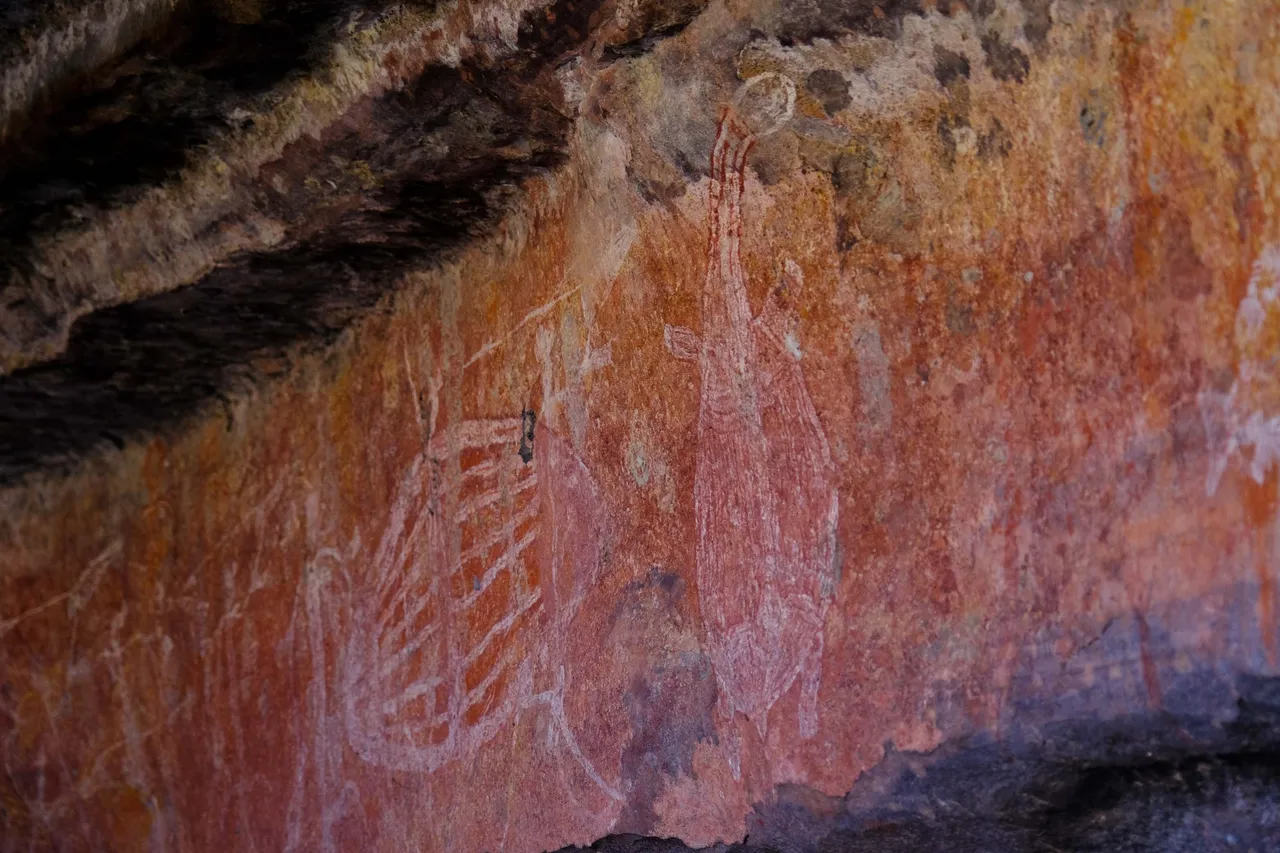In the North of Kakadu national national park, which itself is about a 2.5 hour drive from Darwin which is right in the middle of the northern coastline of Australia is Ubirr, pronounced oo-bir which was a place of meeting for the local Bunitj, Manilagarr and Mandjurlgunj people . Aboriginal Australian tribe have no written language it is an oral (storytelling history) and of course visuals.
So the art here are painted for many reasons, as a sort of prayer and thanks giving but also to education others, The art broadly falls into two categories, Illustrative (decorative) and instructive (educational) the rocks around here, which offered refusge from the flood plains in wet session are like classrooms and social halls, the rock art is generally painted in the 'rooms' formed by rock overhangs and thus is so well preserved.
It's hard to fathom the age of some of these pieces of art. Some of these are at least 3,000 -4,000 years old, there are thoughts that some could be up with 25-30,000 years old, can you imagine that, that there were humans - Australian Aboriginals, the longest continious culture on earth that have been coming to these rocks to paint for thousands and thousands of years. It is truly mind blowing.
So still are 'modern' maybe only 200-250 years ago as they document contact with white people, some traders from Indonesia, some English who would of course wipe out most of the aboriginal tribes of Australia under the false pretense of Terra Nulius (basically, empty land, which is a gross overstatement, people had been living here, in harmony with the land for thousands and thousands of years)
It might be hard to always see the art in this photos, but stare at them and you will see pieces often overlayed with eachother, I will point out what I know

Perhaps this would be what you are expecting, I feel like this is like a movie depiction of cavemen drawings.

It is far more beautiful than that - this style is common (X-ray) style, this is instructive style in the sense that it tells you the insides of the fish that you can catch in this area, and therefore where to cut to reach the belly and spines and alike - very handy.
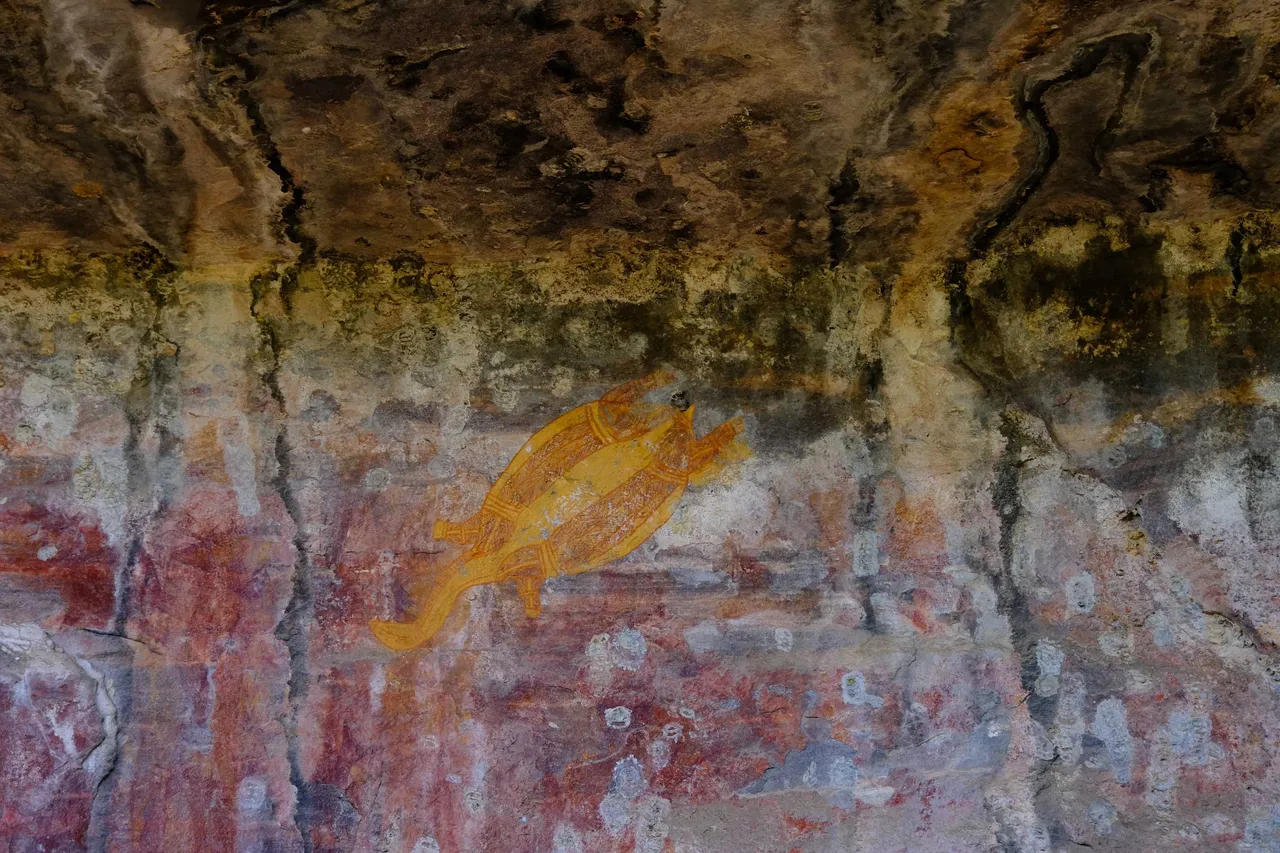
This is a long necked turtle (Almangiyi in the local language)
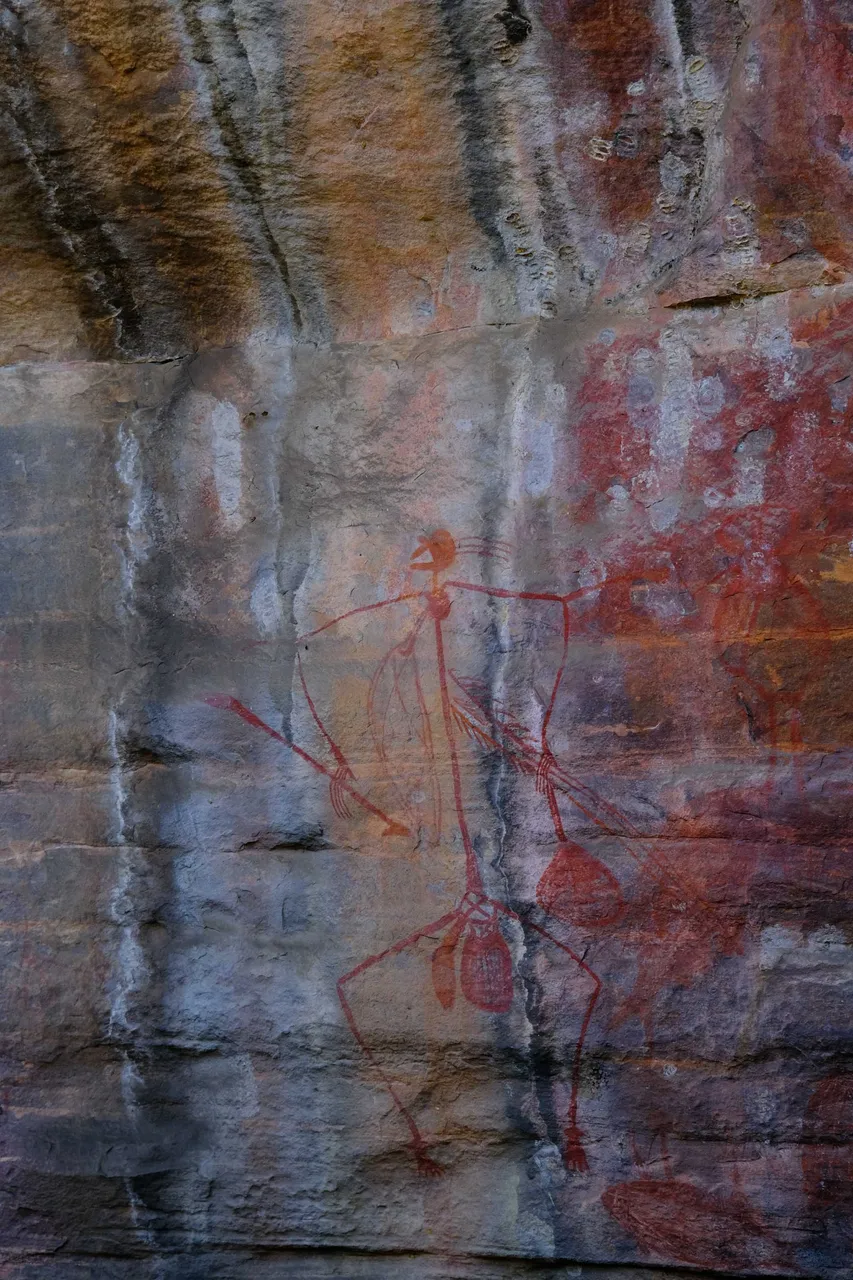
The rainbow serpent is important to many aboriginal cultures, this is her for this part of the country. Here is how it is described: Known at Ubirr by her Gagudju name, Garranga’rreli, the Rainbow Serpent travelled through this area in human form and painted her image on a rock here to remind people of her presence.
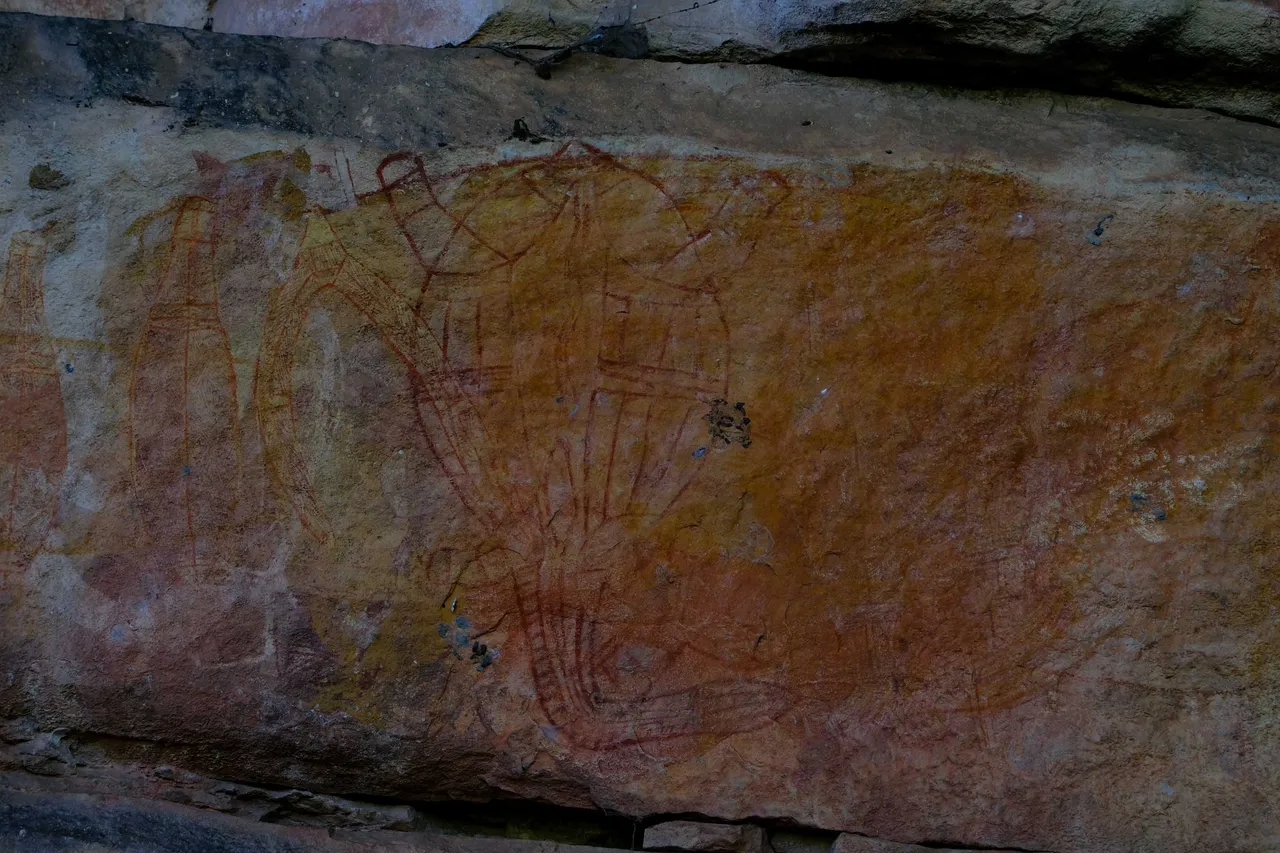
Another turtle, this time illustrative, it is likely that these were painted for two reasons a)to tell visiting tribes what could be hunted nearby and also to remember the spirt and give thanks to the turtle you just killed (and ate), hence why they are painted over the top of other paintings.
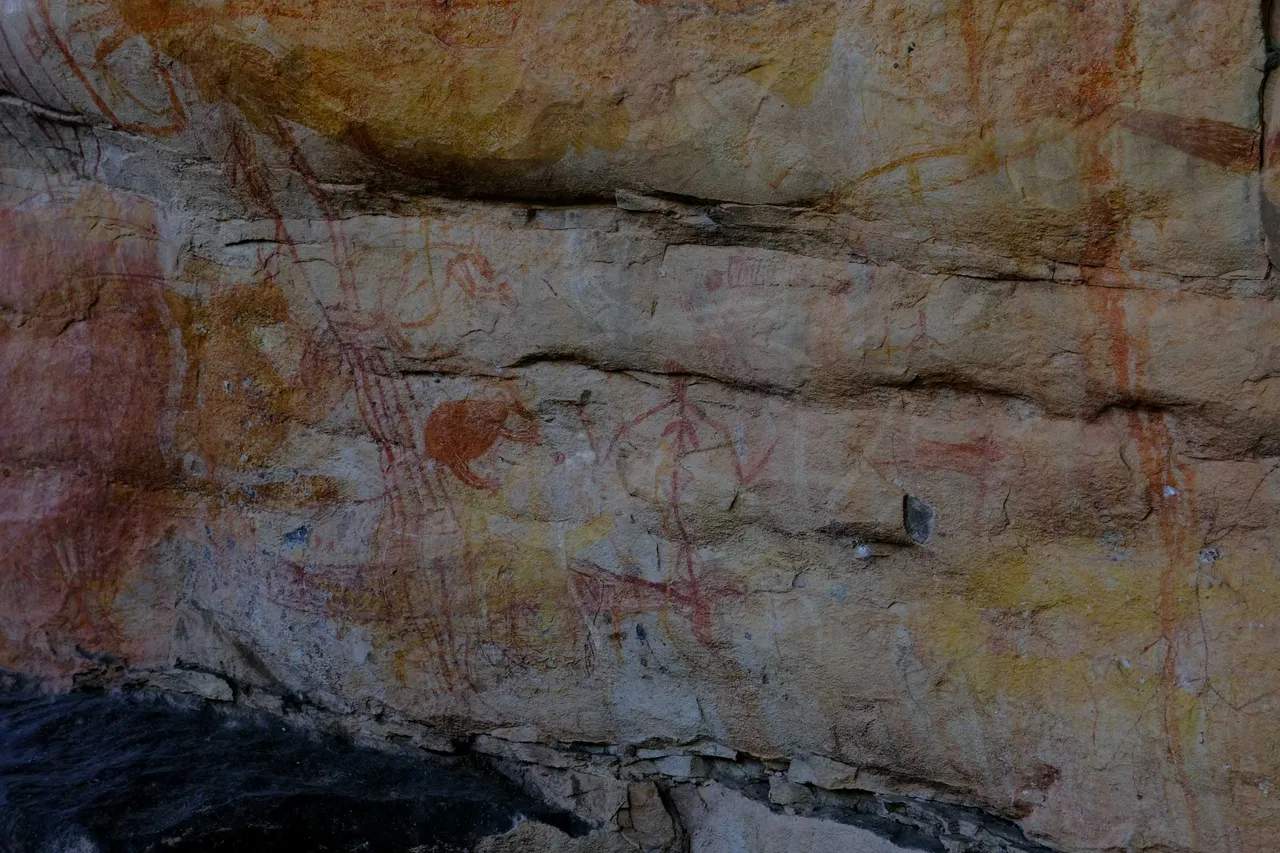
More sense of the sheer number of pieces, there is a wallaby (small kangaroo) in the middle, what looks like another lady on the right and an eel down the bottom.
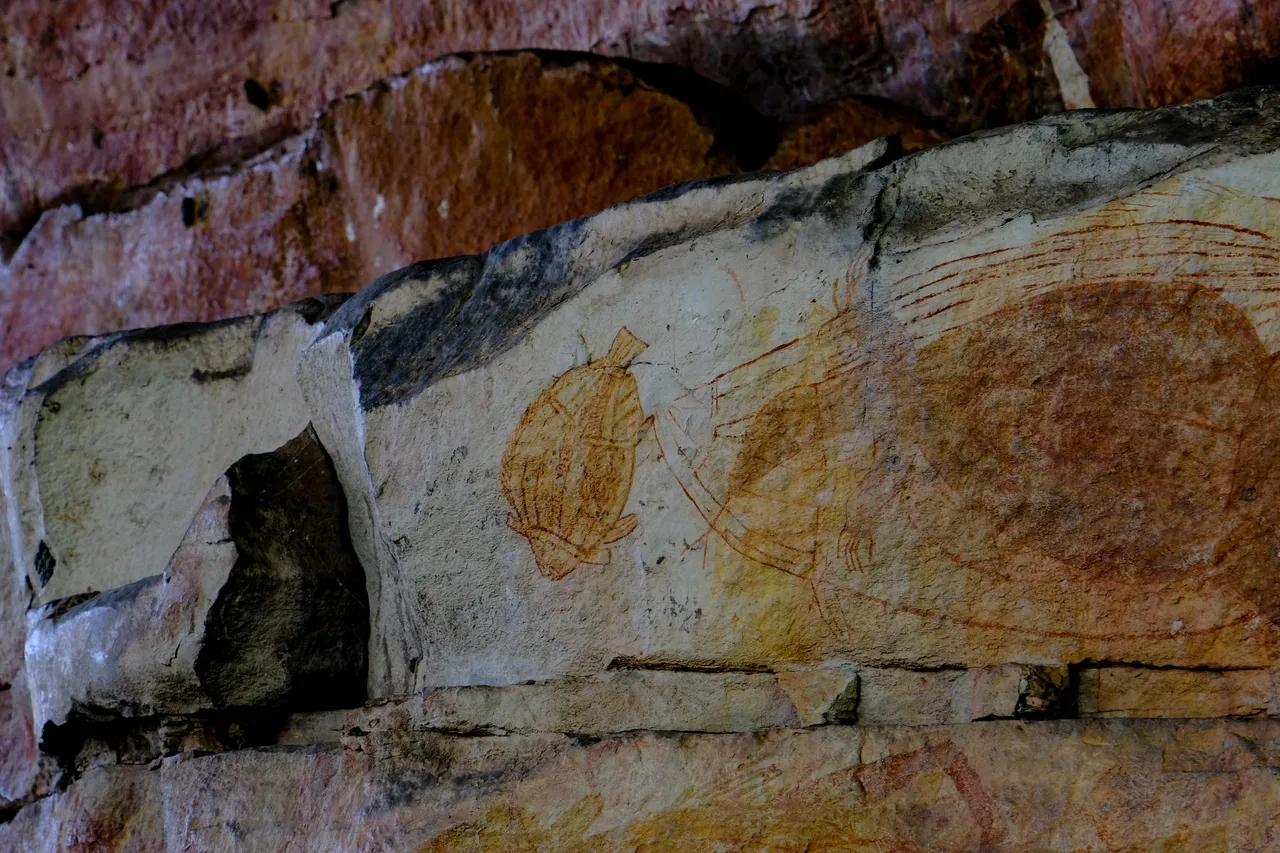
Another fish, and a really really big fish - maybe even back in the day fisherman exaggerated their catches. I'm telling you it was THIS BIG
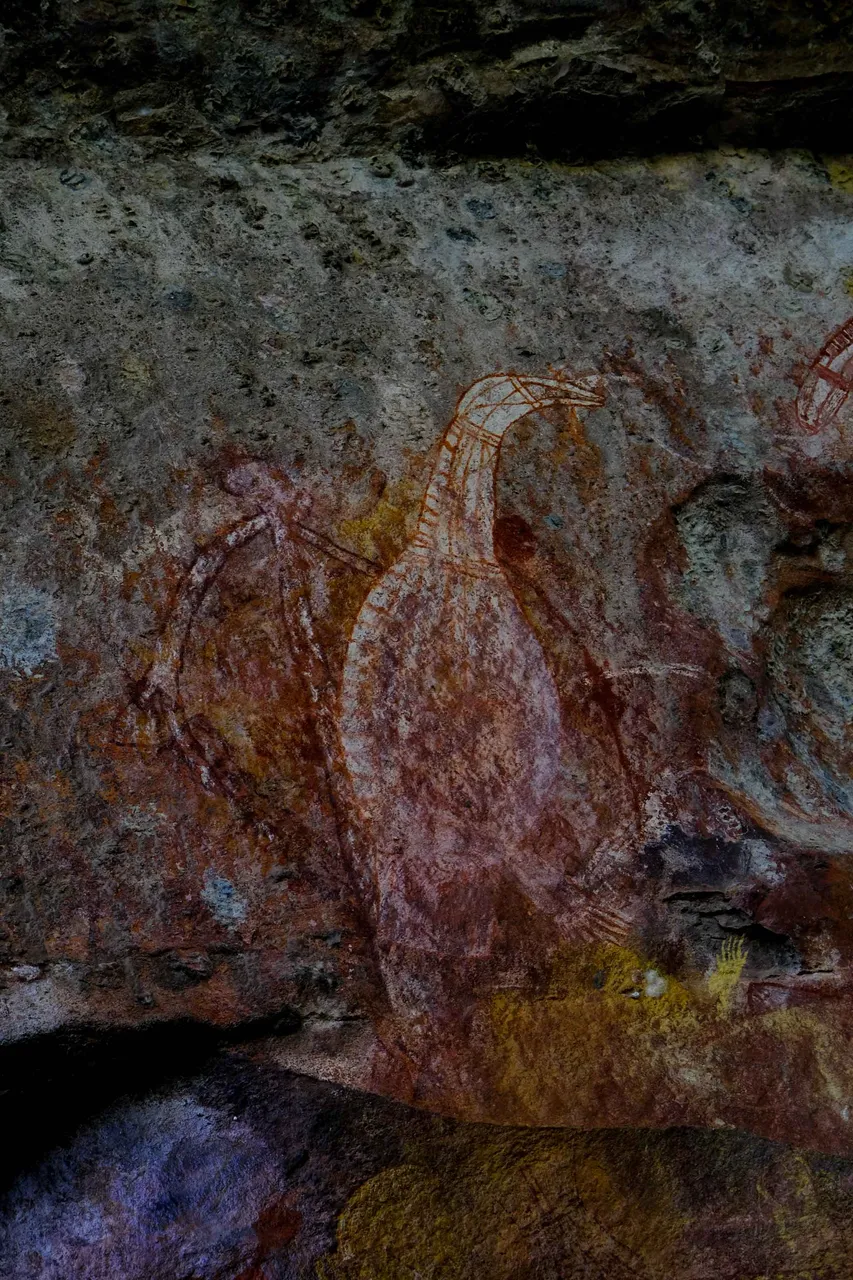
This is a Goanna (with like a big lizard for you non-Aussies)
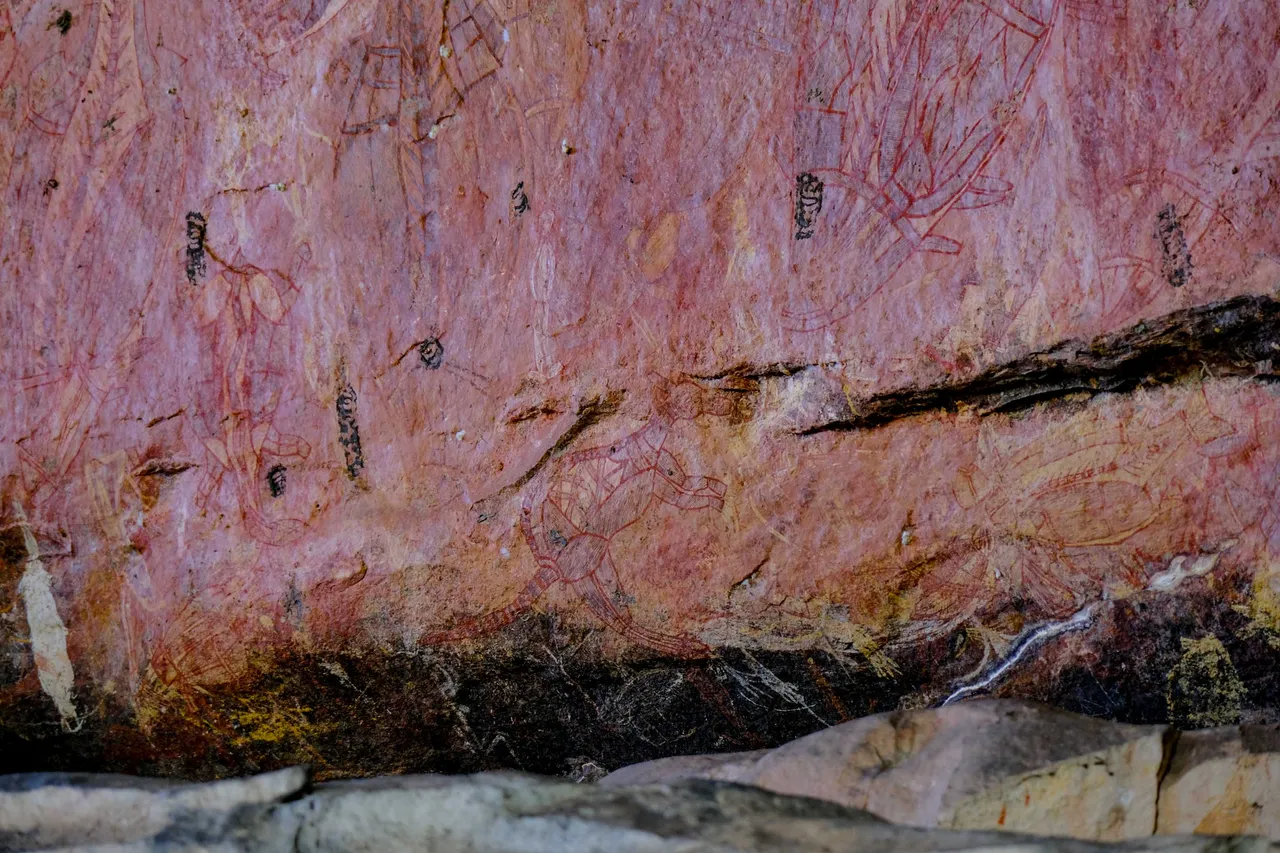
A very cool looking kangaroos at the bottom - I should mention that the 'paint' is ground up stone, ochre, carcoal from fires and alike, there are little holes dotted around the place where the rocks were ground (sort of like a mortar and pestle)
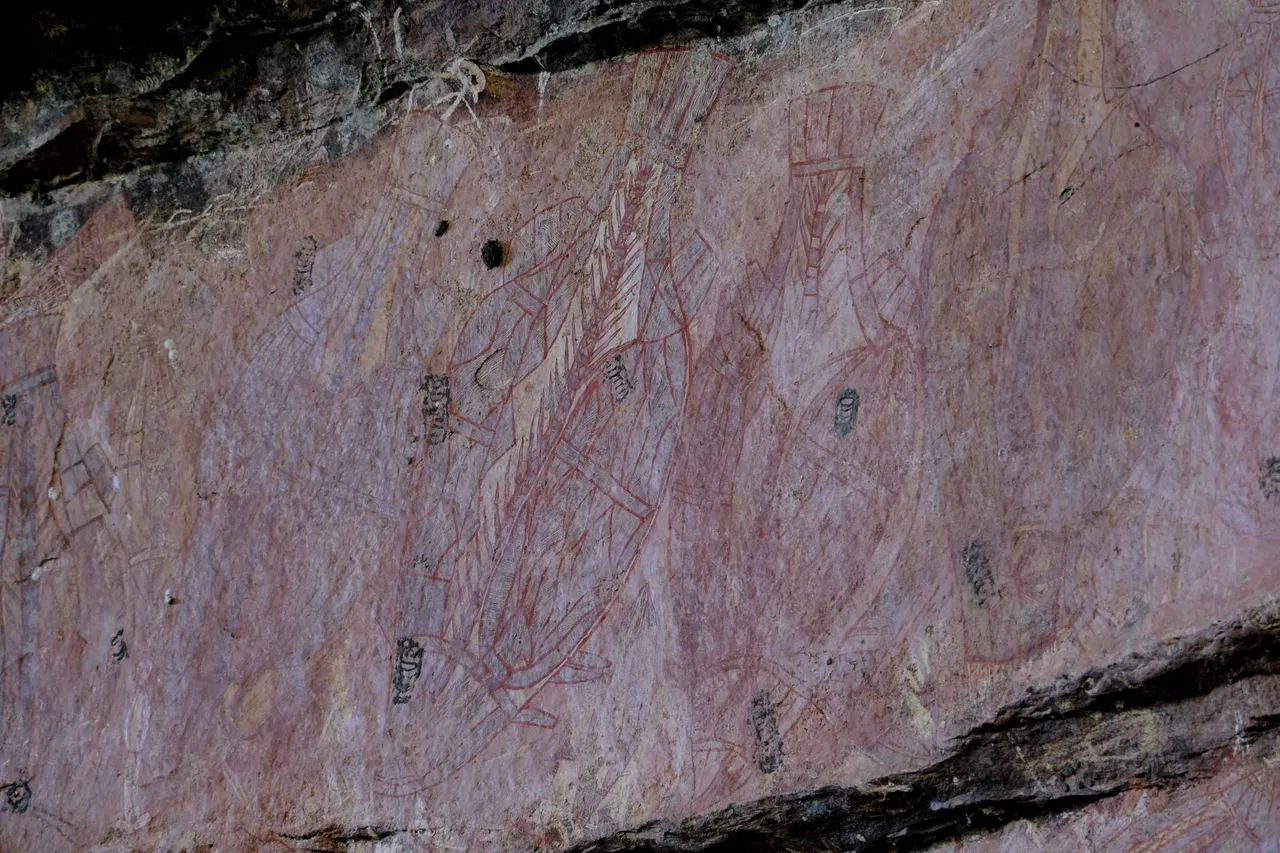
More fish - fish are pretty important
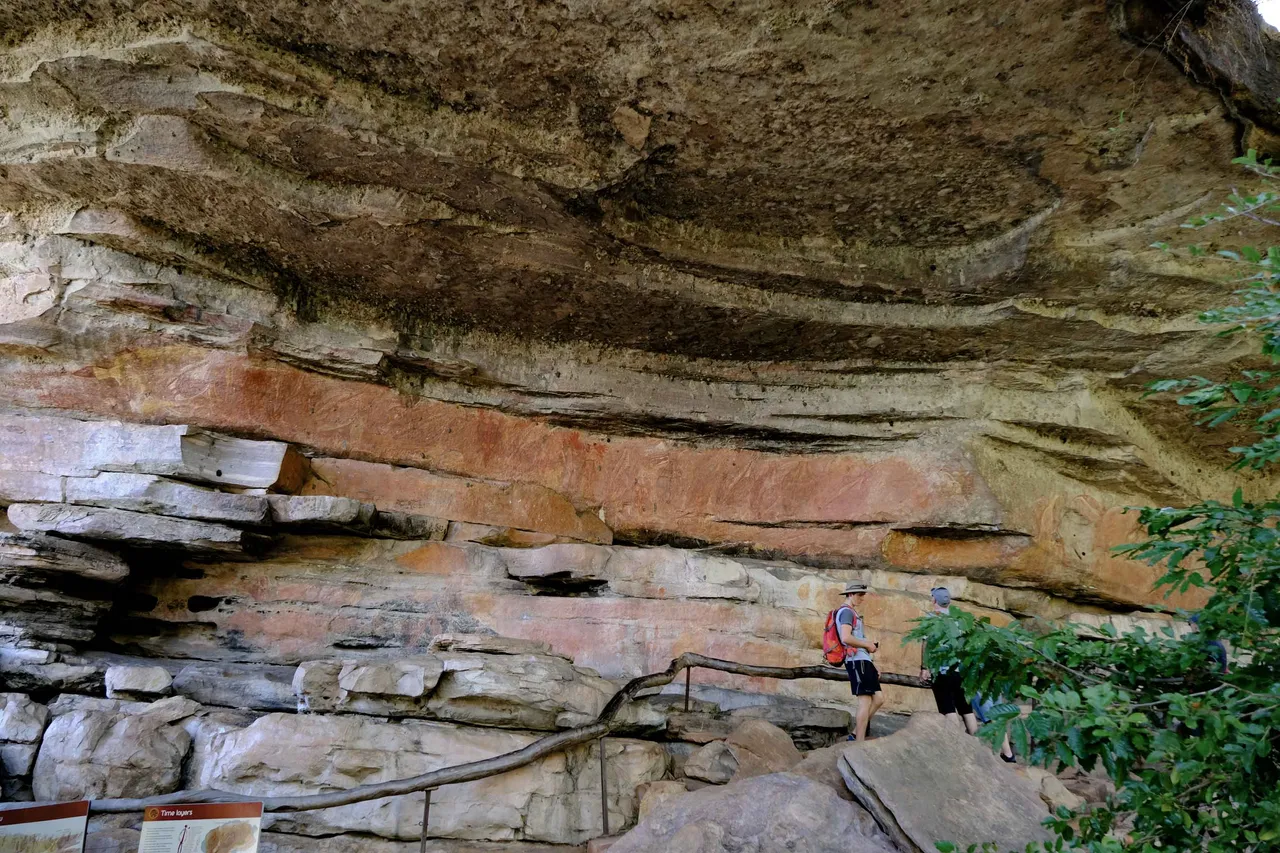
I know it can be hard to get a sense of scale, this is one of about 5-6 galleries the picuytres are in a line along the red rock in the middle.
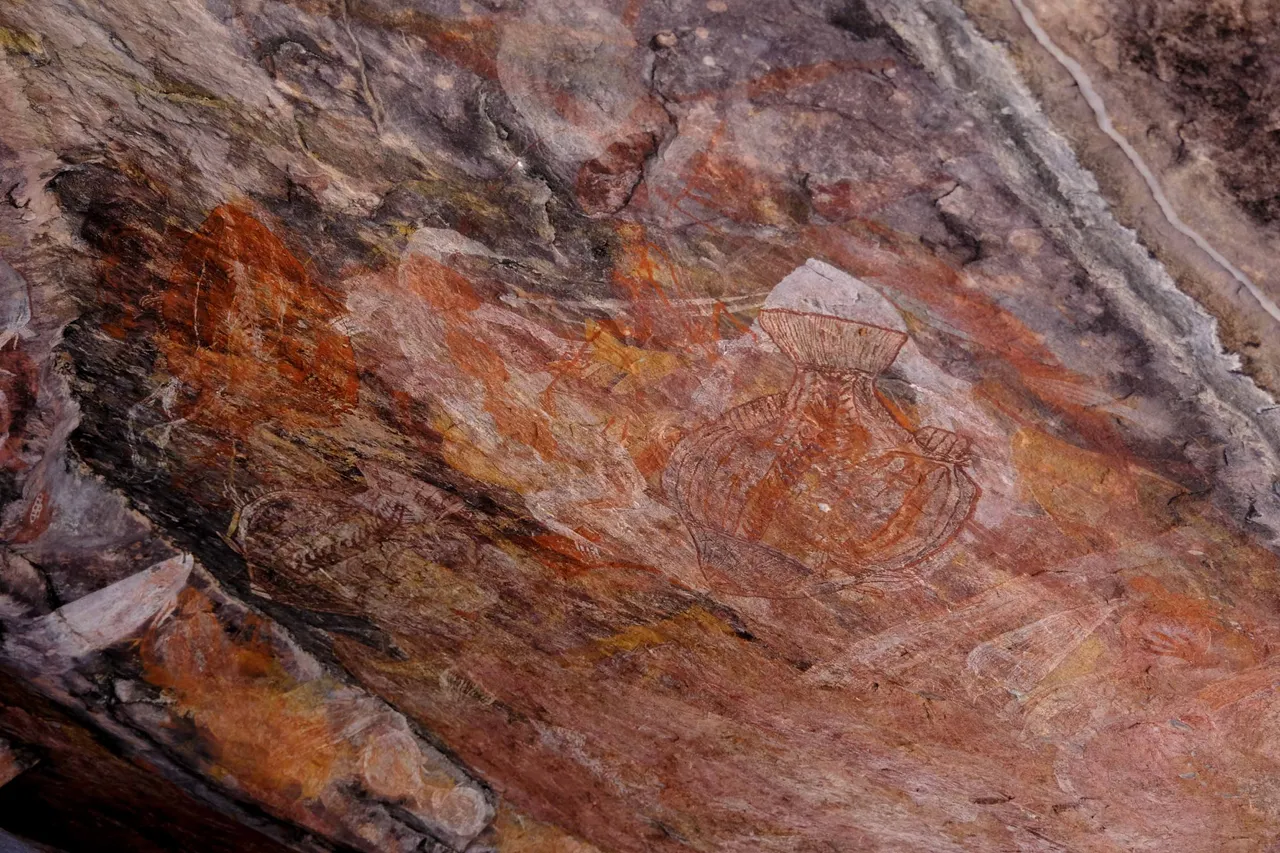
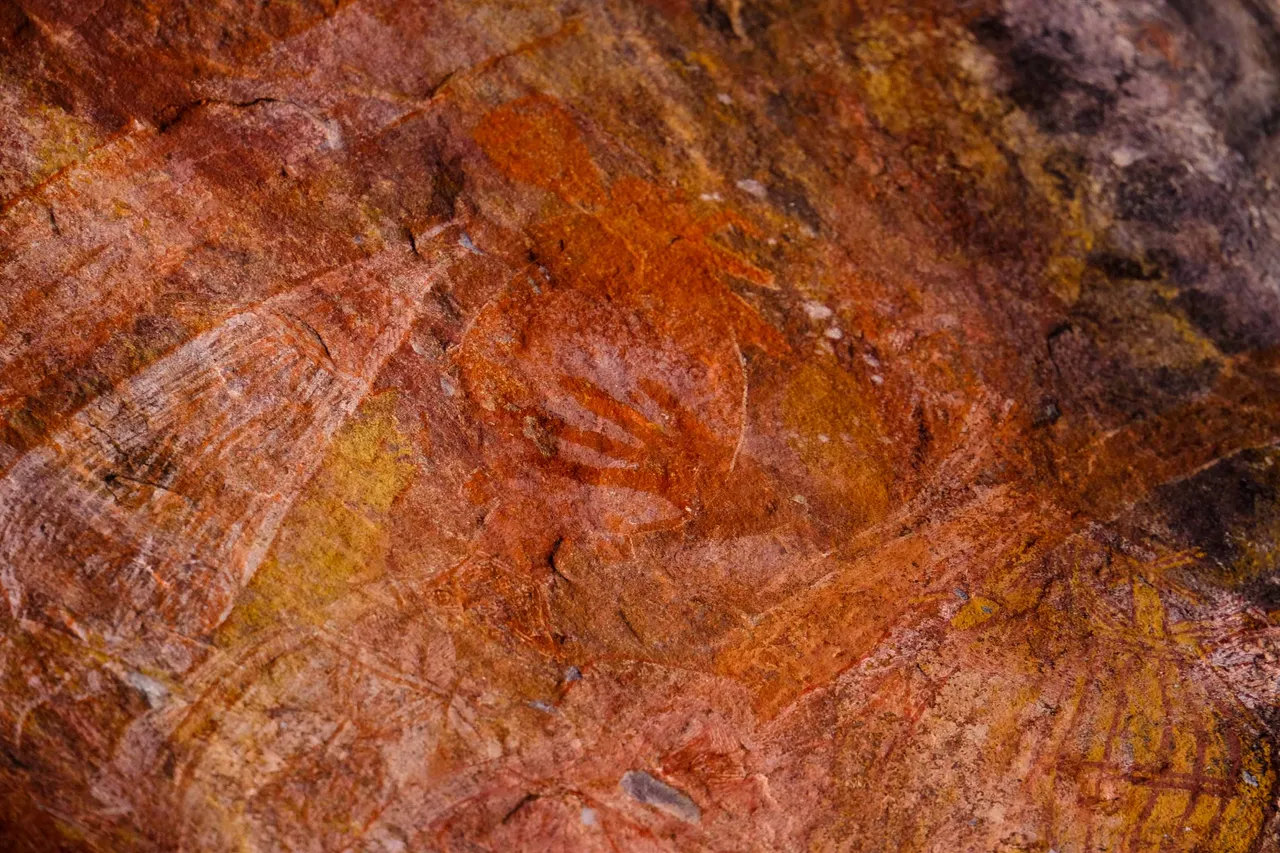
I love this hand print, although not really common in these parts, it's like a signature, you mix the (white) paint with water and then use it like a spray can and your hand is the stencil.
